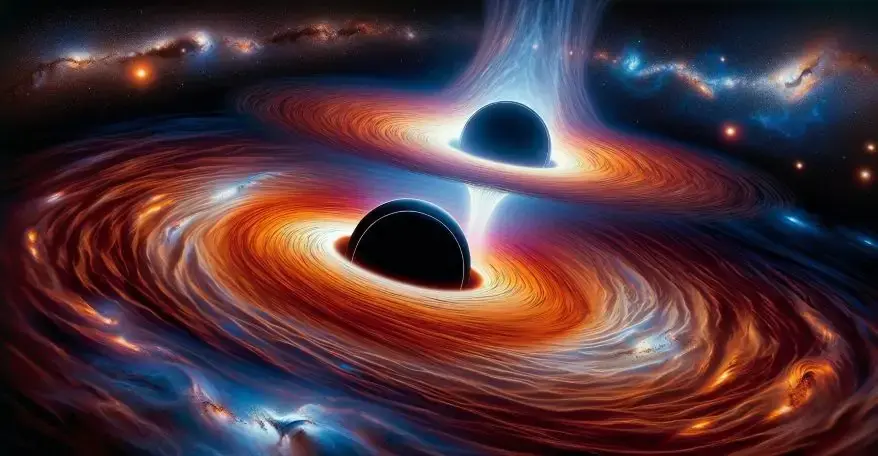The Groundbreaking Discovery of Massive Black Hole Mergers
Scientists have just witnessed the most massive black hole merger ever recorded, shaking up our understanding of the universe. On November 23, 2023, scientists from the LIGO-Virgo-KAGRA (LVK) Collaboration achieved a monumental breakthrough. They detected gravitational waves from the merger of the largest black holes ever observed, resulting in a final black hole weighing more than 225 times the mass of our Sun. This incredible event, named GW231123, marks a significant milestone in our understanding of black hole formation and the universe.
The Findings Behind GW231123
The two black holes that intertwined had masses of approximately 100 and 140 times the mass of our Sun. Interestingly, these black holes are rapidly spinning, which presents unique challenges for scientists studying their origins.
According to Professor Mark Hannam from Cardiff University- This is the most massive black hole binary we’ve observed through gravitational waves.
As researchers analyze this discovery, they grapple with questions about how such massive pairs come to exist.
Understanding Black Hole Formation
Traditionally, scientists believed that stars grow into black holes through typical stellar evolution models. However, this merger defies those models. One possible explanation could be that these two massive black holes stemmed from earlier mergers with smaller black holes. The complexity surrounding GW231123 invites curiosity and further investigation—an exciting premise for aspiring scientists!
Pushing Boundaries in Technology and Theory
The significance of the GW231123 detection goes beyond its cosmic implications; it also pushes the limits of our current gravitational-wave detection technology and theoretical models.
Dr. Charlie Hoy explains that the black holes appear to be spinning very rapidly, near the limit allowed by Einstein’s theory of general relativity.
This rapid spin complicates signal interpretation and analysis.
Gravitational waves are like ripples in space-time caused by gigantic cosmic events like black hole collisions. LIGO has been at the forefront since making its first detection of these waves in 2015. Each ripple carries significant information about what happened during these intense cosmic activities.
The Challenge of Accurate Interpretation
Researchers must utilize advanced theoretical models to accurately interpret these extreme events. Dr. Gregorio Carullo emphasizes that it will take considerable time for researchers to unravel this intricate signal pattern fully. He notes that while the most likely explanation remains a merger between two black holes, alternative scenarios may hold keys to uncovering its unexpected features.
Challenging Existing Theories
Furthermore, the sheer size of this new black hole is defying existing theories. Black holes of this mass are not expected to form through standard stellar evolution. One hypothesis suggests that the merging black holes were themselves the products of previous mergers, creating this truly massive cosmic behemoth. This discovery challenges our current understanding and prompts scientists to refine their models. This new data is a prime example of how science constantly evolves with new data pushing the boundaries of knowledge!
A Bright Future for Gravitational-Wave Research
Gravitational-wave detectors such as LIGO, Virgo, and KAGRA are instrumental in capturing tiny fluctuations in spacetime caused by profound cosmic events like these mergers. The insights gained from such research not only excite current scientific discussions but also lay the foundations for future explorations in astronomy.
Moreover, the black holes involved in this merger were also spinning incredibly fast—almost at the limit predicted by Einstein’s theory. Modeling this event required advanced techniques, pushing the boundaries of our understanding of black hole physics. The incredible data from GW231123 will be made available through the Gravitational Wave Open Science Center (GWOSC), allowing for collaborative research and ongoing investigation.
This discovery will be featured at significant scientific conferences like the 24th International Conference on General Relativity and Gravitation (GR24). Also, it will provide vital information to researchers eager to analyze data through resources such as the Gravitational Wave Open Science Center (GWOSC).
Additionally, to stay updated with the latest developments in STEM research, visit ENTECH Online. Basically, this is our digital magazine for science, technology, engineering, and mathematics. Furthermore, at ENTECH Online, you’ll find a wealth of information.






